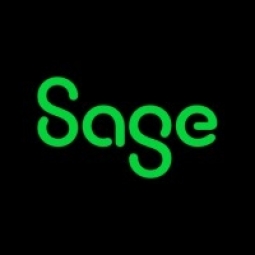下载PDF
Sage 300 Delivers Key Amenities to RTI Hotel Supply
技术
- 功能应用 - 企业资源规划系统 (ERP)
适用功能
- 物流运输
- 销售与市场营销
用例
- 供应链可见性(SCV)
- 库存管理
服务
- 系统集成
挑战
RTI Hotel Supply, Inc. 自 1989 年以来一直为酒店业提供专业采购服务。该公司主要专注于加勒比海和拉丁美洲市场,并已建立起作为高品质产品单一来源供应商的良好声誉。第二个部门负责定制酒店家具,包括梳妆台、橱柜和座椅。该公司一直依赖 Sage 300 作为其会计和分销软件,但多年来一直忽视更新该软件。快速增长(包括开设多个国际办事处)最终促使该公司投资其技术基础设施并将其系统更新到最新水平。
关于客户
RTI Hotel Supply, Inc. 是一家为酒店业提供专业采购服务的公司。该公司主要专注于加勒比海和拉丁美洲市场,并已建立起作为高品质产品单一来源供应商的良好声誉。该公司的第二个部门制造定制酒店家具,包括梳妆台、橱柜和座椅。该公司拥有一支专业且经验丰富的员工队伍,可提供个性化服务,让客户一次又一次地光顾。RTI Hotel Supply 自成立以来一直依赖 Sage 300 作为其会计和分销软件,最近又添加了 Sage CRM,让公司能够全面了解其客户及其运营情况。
解决方案
RTI Hotel Supply 决定将其 Sage 300 系统更新到最新水平,以适应其快速发展和开设多个国际办事处。该公司还添加了 Sage CRM,以便全面了解其客户和运营情况。Sage 300 提供仓库人员整合订单以尽量减少运费所需的信息。该软件还提供工具来帮助保持库存的完美平衡,显示哪些物品在流动,哪些没有。该公司可以将当前销售与历史销售进行比较,并进行季节性调整,以确保手头有正确的组合。Sage CRM 与 Microsoft® Outlook® 同步,因此公司的所有日历约会和电子邮件在两个地方都是最新的。
运营影响
数量效益
相关案例.

Case Study
Remote Temperature Monitoring of Perishable Goods Saves Money
RMONI was facing temperature monitoring challenges in a cold chain business. A cold chain must be established and maintained to ensure goods have been properly refrigerated during every step of the process, making temperature monitoring a critical business function. Manual registration practice can be very costly, labor intensive and prone to mistakes.

Case Study
Hospital Inventory Management
The hospital supply chain team is responsible for ensuring that the right medical supplies are readily available to clinicians when and where needed, and to do so in the most efficient manner possible. However, many of the systems and processes in use at the cancer center for supply chain management were not best suited to support these goals. Barcoding technology, a commonly used method for inventory management of medical supplies, is labor intensive, time consuming, does not provide real-time visibility into inventory levels and can be prone to error. Consequently, the lack of accurate and real-time visibility into inventory levels across multiple supply rooms in multiple hospital facilities creates additional inefficiency in the system causing over-ordering, hoarding, and wasted supplies. Other sources of waste and cost were also identified as candidates for improvement. Existing systems and processes did not provide adequate security for high-cost inventory within the hospital, which was another driver of cost. A lack of visibility into expiration dates for supplies resulted in supplies being wasted due to past expiry dates. Storage of supplies was also a key consideration given the location of the cancer center’s facilities in a dense urban setting, where space is always at a premium. In order to address the challenges outlined above, the hospital sought a solution that would provide real-time inventory information with high levels of accuracy, reduce the level of manual effort required and enable data driven decision making to ensure that the right supplies were readily available to clinicians in the right location at the right time.









